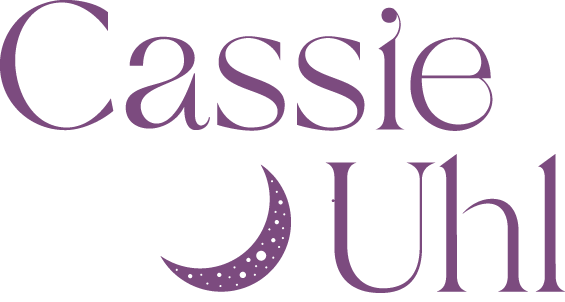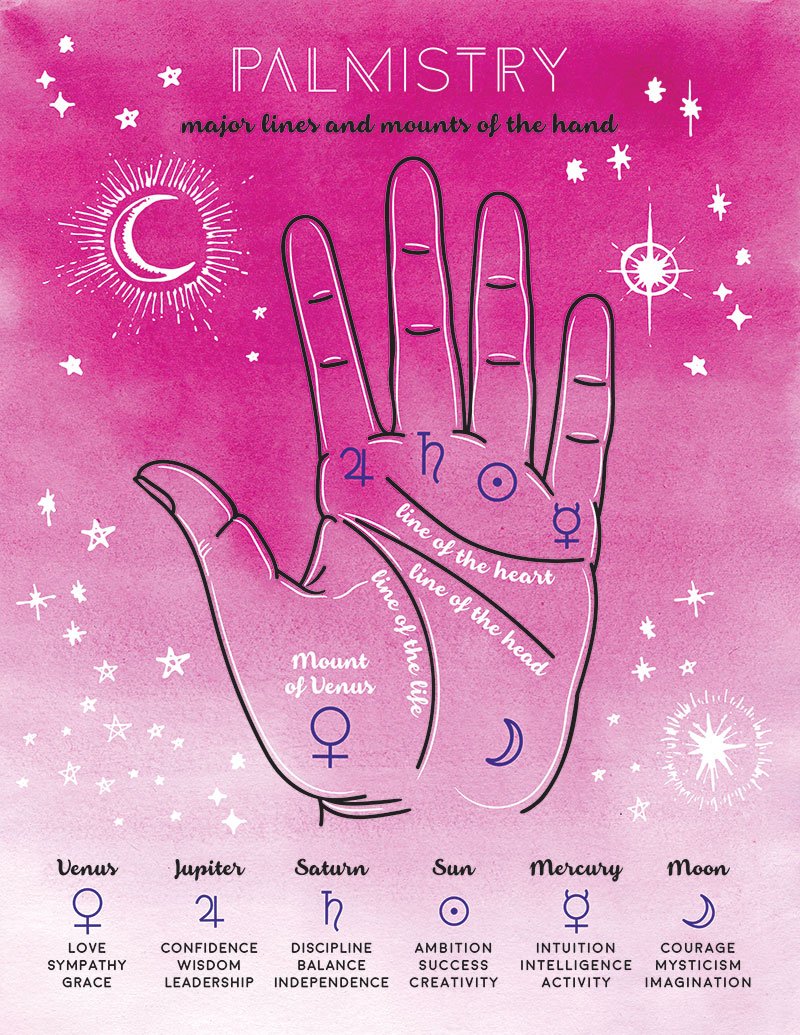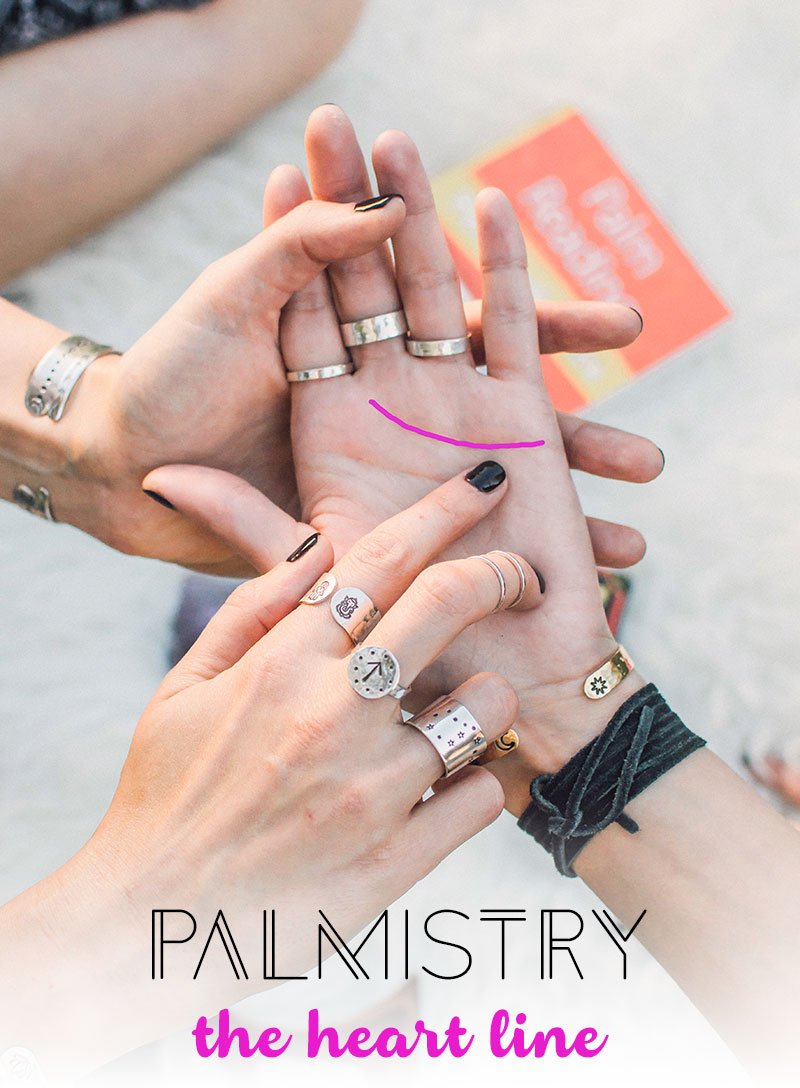Basic Palmistry // The Major Lines
Palmistry, or chiromancy, seemed like the perfect topic for the month of love! So, put down your phones and laptops (after you read this of course) and snuggle up with someone you love and have a look at their palm. It’s the perfect opportunity to take time with your loved ones, hold their hands and explore their past, present, and future with the magic of palmistry.
My father dabbled in palmistry when I was young. I have fond memories of him reading my sister and I’s palms and teaching us what the lines meant. I’ll never forget what he taught me and often find myself trying to steal glances at people's hands. Whether you believe in the validity of this ancient art or not, there’s something very special about it that’s worth exploring.
This week I’ll walk you through a little bit about palmistry, the 3 major lines, and what they mean. Next week, we’ll dig a little deeper and look at markings and mounts on the hands.
A Bit of History
Palmistry is rooted in thousands of years of practice that has been passed down from generation to generation. Palm reading even survived major suppression throughout the middle ages. In fact, it was outlawed by King Henry VIII, along with astrology. Very little has changed in the practice of palmistry, and many of the techniques used today are the same techniques used in its origins of India. The practice of reading palms spread from India to China, then slowly to other countries--it is linked closely to Chinese medicine and astrology.
The Science
Science is starting to catch up with palmistry and some scientists and psychologists are finding links between our hands and our lives. Science has found that the lengths of certain fingers correlate to the amount of testosterone and estrogen produced in the body, and some swirls and lines on the hands have been linked to genetic disorders. Though most scientists consider chiromancy a pseudo-science, thousands of years of staying power leads me to believe it must have some positive uses.
The Major Lines
The major lines should be the most dominant and deep lines on your hand. The three major lines are: the heart line, head line, and life line. These three lines will work together to give you a more complete picture of your past, present, and future.
The Heart Line
Your heart line, or sometimes called the love line, is the major line at the top of the hand. The heart line can help shed light on your emotional energy, physical love, the health of your heart and it connects deeply to your soul.
Keys to look for in the heart line:
A straight heart line indicates that you are more sensitive.
If your heart line curves more it indicates that you are more expressive with your emotions.
If your heart line ends under your first finger you may find that you’re easily let down.
If your heart line ends under your second finger you may find that you put your emotional needs ahead of others.
A heart line that ends in between your first finger and second finger indicates a balance between these two energies.
A clear and deep heart line indicates that you will have a stable emotional life.
The Head Line
Moving down, your next major line is your head line. The head line relates to your intellect and how you use your mind. The length and depth of your head line does not directly correlate to your intelligence and has more to do with the way you think.Keys to look for in the head line:
In general, the longer and deeper the head line is the more intricate your thinking process will be.
If your head line is relatively straight it indicates that you are very down-to-earth and logical.
If your head line curves it indicates that you are more imaginative and more likely to trust your intuition.
A fork at the end of your head line is referred to as a “writer’s fork”. This means that you may be more inventive and lean towards speaking or writing.
The Life Line
The life line usually starts on the thumb side of the hand under the head line. Your life line will tell you more about how much energy and stamina you’ll have, and about encounters you may experience in life. The life line is not a representation of how long or short your life will be.
Keys to look for in your life line:
Long deep lines reflect that you’ll experience an abundance of vitality in your life.
If your life line reaches farther into the middle of your hand this indicates that you’ll have more energy throughout your life, whereas a life line that hugs closer to the thumb indicates lower energy.
If your life line starts closer to your first finger it reveals that you’re a go-getter.
If your life line starts closer to your thumb you’re more likely to take life as it is handed to you.
If this line starts in the middle of these two points it means that you’ve got a great balance of both of these aspects.
Doing a Palm Reading
It’s standard for the dominant hand to be used for a reading. The non-dominant hand does have meaning, but the dominant hand has the most relevant information and is the best place to start.
See something on your hand or a loved one that you don’t like? Many palmists believe that the lines on your hand can change over time! To change your lines you’ll need to focus intently on the changes you’d like to see in your life. Most importantly, always highlight positive points you find in your readings!
Now that you know the basics of palm reading, you’re ready to start practicing this ancient art on yourself and your loved ones. Next week, I’ll walk you through the mounts and markings of the hands. Can’t wait and want to dig in more? Check out my other post all about mounts and markings on the palms here.







